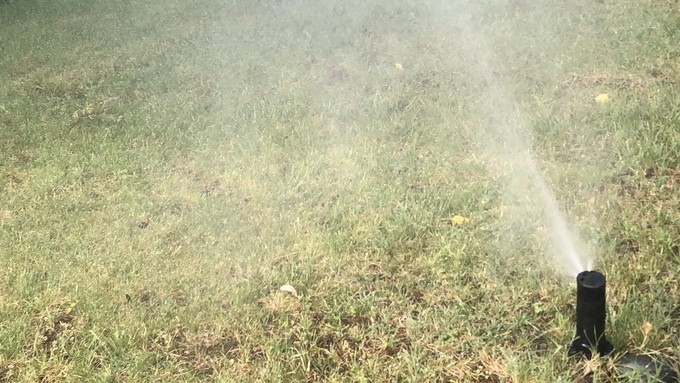
Global initiative leads to local landscapes and ways to save

How are you using water around your house? Much of household water is used outdoors. And if you want to replace that lawn, some water providers offer incentives. Kathy Morrison
Everybody needs water – especially good, clean, drinkable water. Recognizing that universal fact, the United Nations declared March 22 – today – as World Water Day.
World Water Day dates back to 1994 as a way to raise global awareness about water-related issues. About half the world’s population faces severe water scarcity at least part of each year.
How can you be part of World Water Day? As the U.N. says, think globally, act locally – by making the most of every drop.
Which makes today a good time to consider your own garden’s water use and needs. In the warm months ahead, our landscapes account for about half of our total water use. Changes made now can add up to huge savings in water – and dollars – for years to come.
Tune-up your irrigation system with high-efficiency sprinkler nozzles or a smart controller. You’ll save hundreds of gallons a week and your plants will grow healthier. Several local water providers offer rebates for irrigation upgrades. Find them here: https://gbee2f.p3cdn1.secureserver.net/wp-content/uploads/2024/03/RWA-Incentive-Overview.pdf.
The City of Sacramento, for example, offers rebates for irrigation updates, smart irrigation controllers, rain barrels, and laundry-to-landscape graywater systems.
Or consider replacing thirsty turf with more water-wise alternatives while helping beneficial insects. Several of those same Sacramento-area water providers are offering “Cash for Grass” incentives for lawn replacement. (They’re listed on that same page as the rebates.) Find more water-wise ideas here: https://bewatersmart.info/.
As for the official World Water Day observance, this year’s commemoration puts a special twist on this event: “Water for Peace.” It spotlights how water brings people together and can be a catalyst for harmony.
Learn more here: https://www.un.org/en/observances/water-day.
Comments
0 comments have been posted.Sacramento Digs Gardening to your inbox.
Food in My Back Yard Series
May 6: Maintain soil moisture with mulch for garden success
April 29: What's (already) wrong with my tomato plants?
April 22: Should you stock up on fertilizer? (Yes!)
April 15: Grow culinary herbs in containers
April 8: When to plant summer vegetables
April 1: Don't be fooled by these garden myths
March 25: Fertilizer tips: How to 'feed' your vegetables for healthy growth
March 18: Time to give vegetable seedlings some more space
March 11: Ways to win the fight against weeds
March 4: Potatoes from the garden
Feb. 25: Plant a fruit tree now -- for later
Feb. 18: How to squeeze more food into less space
Feb. 11: When to plant? Consider staggering your transplants
Feb. 4: Starting in seed starting
Sites We Like
Garden Checklist for week of May 11
Make the most of the lower temperatures early in the week. We’ll be back in the 80s by Thursday.
* Plant, plant, plant! It’s prime planting season in the Sacramento area. Time to set out those tomato transplants along with peppers and eggplants. Pinch off any flowers on new transplants to make them concentrate on establishing roots instead of setting premature fruit.
* Direct-seed melons, cucumbers, summer squash, corn, radishes, pumpkins and annual herbs such as basil.
* Harvest cabbage, lettuce, peas and green onions.
* In the flower garden, direct-seed sunflowers, cosmos, salvia, zinnias, marigolds, celosia and asters. (You also can transplant seedlings for many of the same flowers.)
* Plant dahlia tubers.
* Transplant petunias, marigolds and perennial flowers such as astilbe, columbine, coneflowers, coreopsis, dahlias, rudbeckia and verbena.
* Keep an eye out for slugs, snails, earwigs and aphids that want to dine on tender new growth.
* Feed summer bloomers with a balanced fertilizer.
* For continued bloom, cut off spent flowers on roses as well as other flowering plants.
* Add mulch to the garden to maintain moisture. Mulch also cuts down on weeds. But don’t let it mound around the stems or trunks of trees or shrubs. Leave about a 6-inch-to-1-foot circle to avoid crown rot or other problems.
* Remember to weed! Pull those nasties before they set seed.
* Water early in the day and keep seedlings evenly moist.